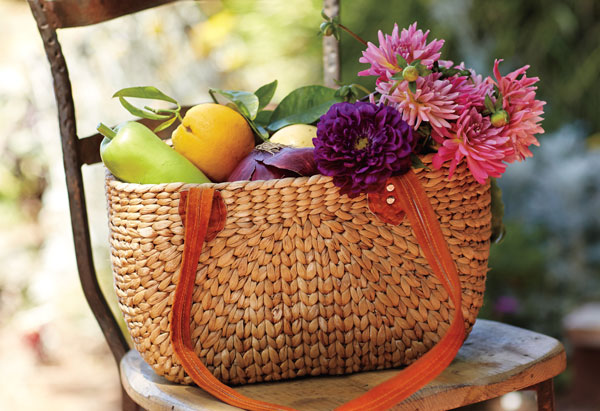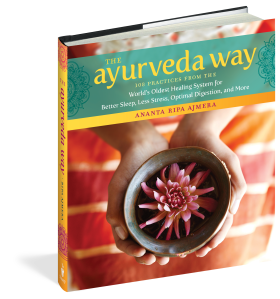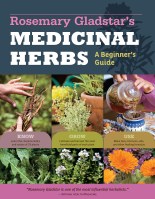Three Ayurvedic Practices for Fall
The peak of pitta dosha — one of Ayurveda’s three mind-body types — happens in the fall. To harness the season’s energies and benefits, here are three Ayurvedic strategies that anyone can try.

One of my favorite things about living Ayurveda is how the strategies for finding harmony with nature change throughout the year. I used to blindly follow the same protocols for food, work, and exercise all year, but with Ayurveda’s seasonal guidelines, I enjoy the variety of approaches and am much more in touch with the changes in nature and in my own body and mind. Ayurveda is like an amazing compass with which to navigate and plan my year.
Ayurveda outlines six distinct seasons per year. These specific seasons follow the natural pattern of the three doshas (Ayurveda’s mind-body types, made up of the five great elements in different combinations) as they build up, peak, and then dissipate throughout the year. Following a seasonal Ayurvedic regimen not only keeps you healthy during each current season, but it also prepares your body for the following season.
In fall (September 14–November 14), pitta dosha (the combination of fire and water) peaks. Pitta dosha is all about transformation, and when it is balanced, it gives you the ability to be an excellent leader, make tough decisions, and perform critical analyses. Imbalanced pitta creates burning sensations and 40 different diseases, including heartburn, hot flashes, and inflammation. Whether you’re seeking to harness the increased focus that comes with pitta dosha’s peak, or need the cooling medicine of the moon, here are a few simple practices you can adopt as we shift into autumn.
Take advantage of the natural focus the fall season provides to launch a successful new venture.
Fall is the best time to launch a new venture — whether a new business or a new project at your workplace — because this is when pitta dosha is naturally high, giving you focus, clarity, intelligent strategic thinking, and planning abilities.
The fall season also brings illuminating Vedic holidays such as Diwali, the Vedic festival of light. This festival celebrates the victory of the light of knowledge over the darkness of ignorance and the illusions we unconsciously carry around within us. It occurs sometime between September and November and is considered a very auspicious time to launch new ventures with a blast of positivity.
Another nice thing about launching ventures in the fall is that you have the energy to work really hard throughout the winter and spring. By the time summer rolls around, you can afford to schedule downtime, which creates a window of receptivity for great inspiration of ways to improve your project or for new ideas to explore.
Absorb the moon’s medicine.
As a modern, globalized society, we’ve lost touch with the movements and healing aspects of the sun, moon, and wind. Ayurveda urges you to return to nature and benefit from nature’s subtle medicine. Natural elements are always at play around you and are more accessible than you often realize.
Whereas pitta dosha is connected with the sun and its metabolizing heat and intensity, the moon is associated with kapha dosha, which is made of the earth and water elements. Kapha dosha is naturally stable, soothing, cool, calm, maturing, and grounding.
Ayurvedic sages recommend you go outside to absorb the moonlight in fall, when a lot of pitta dosha is present. Those suffering from excess heat, whether physically or mentally (from too much stress or having to meet many tight deadlines), can particularly benefit from the moon’s soothing, maternal medicine.
The Vedic holiday Sharad Purnima is on the most powerful full moon of the year, when the moon is closest to the earth (in 2021, it falls on October 19). On this fall night, as my teacher revealed, “It’s believed in Ayurveda that exposure to the moon’s rays is very helpful in mitigating the adverse effects of excess pitta dosha, including many kinds of digestive, blood, skin, lymph, and heat disorders, throughout the season.”
Reclaim your health with khichadi.
In the fall, seasonal foods to enjoy include rice, green mung dal, bitter and green vegetables, squashes, pumpkin, sweet potatoes, green beans, asparagus, okra, and ghee — foods in the categories of bitter, sweet, and astringent flavors. Made of cooked green mung dal lentils, white rice, and a variety of spices, khichadi (also called kitchari) is one of Ayurveda’s superfoods. It can be made with a number of seasonal spices and vegetables, so you can continually experience different flavors. For those who want to cleanse the body, it is helpful to eat a diet of khichadi and takra, a spiced yogurt drink, for about 7 to 10 days.

Khichadi
Serves 2–3
Ingredients
- ½ cup white basmati rice
- 1 cup green mung dal (you can also use ½ cup yellow and ½ cup green dal)
- Himalayan pink rock salt
- ¼ teaspoon turmeric powder
- 2 teaspoons ghee
- ¼ teaspoon cumin seeds
- Fresh cilantro, chopped, for garnish
Directions
Rinse the rice and dal, then add to a medium saucepan. Add enough water to cover the rice and dal by 1 inch and soak for 3 to 4 hours if possible (or at least 30 minutes).
Place the pot on the stove over high heat. Heat until it boils, then reduce the heat to low. Add the rock salt and turmeric and cook, stirring occasionally, until it has a mushy consistency, 20 to 25 minutes. Add additional water if preferred, or cook until it becomes as dry as you like.
Place the ghee in a small skillet over medium heat. Add the cumin seeds and cook until the seeds start crackling, about 10 to 15 seconds or less.
Pour the warmed ghee mixture into the pot with the rice and dal. Serve with fresh cilantro for added flavor and digestive power.
TEXT AND RECIPE EXCERPTED AND ADAPTED FROM THE AYURVEDA WAY © 2017 BY ANANTA RIPA AJMERA. KHICHADI PHOTO © LIZ DALY. ALL RIGHTS RESERVED.











